◆ Mailboxes in Japan
Until the 1970s, mailboxes were mainly cylindrical in shape (commonly known
as the “cylindrical mailbox” or “round mailbox”), but most of them have
been replaced by box-shaped mailboxes. In 1996, the box-shaped mailboxes
were diversified into five improved types, with slits made wider to accommodate
B4-sized mail, and were situated not so high up, in order to make them
more accessible for children and those in wheelchairs (type 10 through
type 14 mailboxes).
In 1871, when Japan’s postal service first began, the number of mailboxes
in service was 87, rising to 1,246 by the end of 1877. Since then, the
number has gradually increased each year (except in the period immediately
after World War II) and reached 188,326 in FY2009.
Many of the mailboxes placed in urban areas with high usage levels are
equipped with two slits, one for “postcards and letters” and the other
for “other mail”. During the period when New Year cards are sent out, one
of the slits is assigned to New Year cards, changing the combination of
the slits to “New Year mail” and “other mail”. A yellow seal, marked “New
Year mail” is also affixed near the slit designated for New Year cards
during this period.
In Japan, aside from being situated alongside streets, mailboxes are placed in other areas, such as near factories and on other private property. In special cases, they are placed at Japan Self Defense Forces bases, at the summits of high mountains without access by road or ropeway, and actually, at the bottom of the sea (the underwater mailbox in Susami Town in Wakayama Prefecture). Even from a mailbox located at the bottom of the sea, mail is collected at designated times for delivery. During the period until the 1980s, when mail was transported by rail, mailboxes were placed at major railway stations, and some of the mail deposited therein, depending on the destination, was loaded directly onto trains at the stations and postmarked onboard. At present, however, mailboxes remain in service only on the platforms of a very small number of railway stations. In and after October 2007, mailboxes are managed and operated by Japan Post Service Co., Ltd., established through postal privatization, and the mail collected from these mailboxes is postmarked with the names of the respective branches of the company. In urban areas, as well as some other locations, the actual collection of mail from mailboxes managed and operated by Japan Post Service Co., Ltd. is often performed by agents under subcontract with the company. The mail collection intervals from these mailboxes are fixed for each mailbox, and the area and approximate times of collection are shown on each respective mailbox.
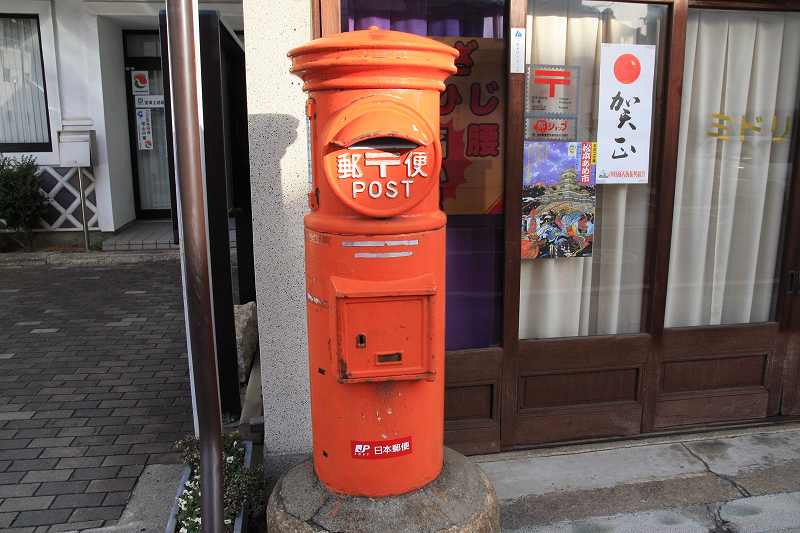 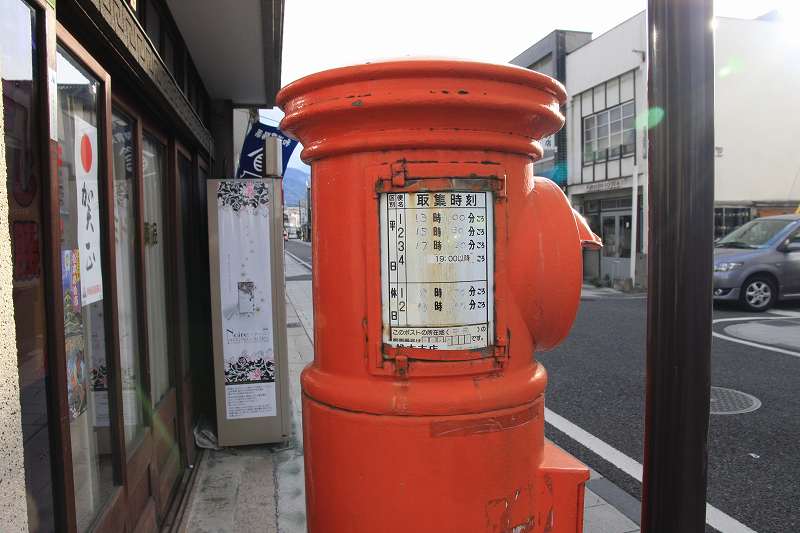
Matsumoto;round mailbox side of round mailbox
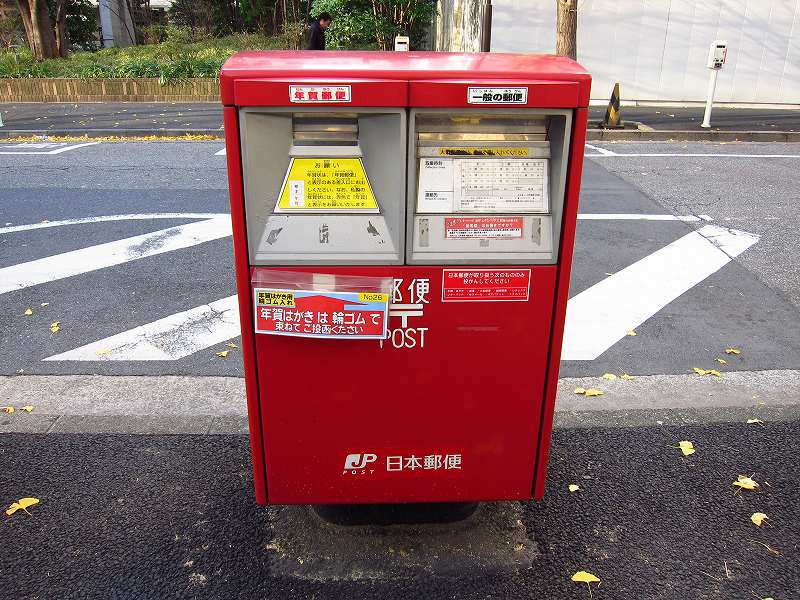 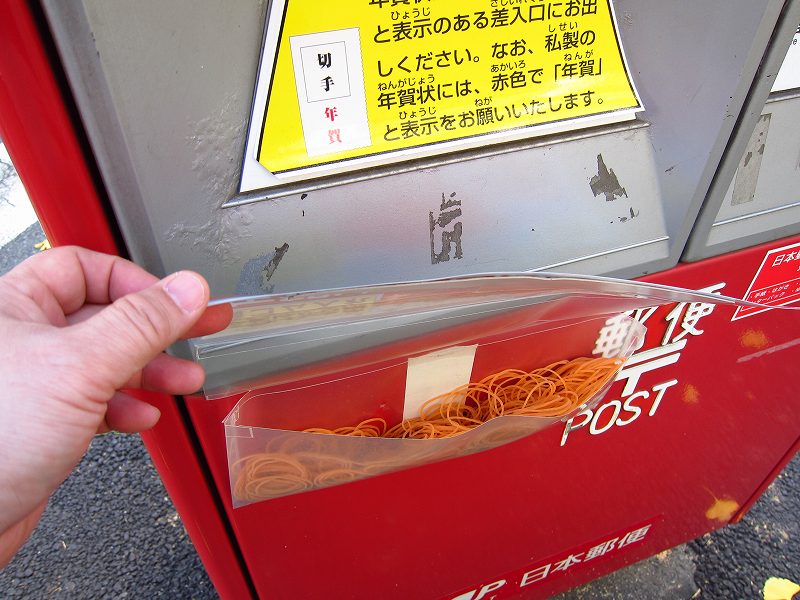
A New Year's card season A rubber band
|
◆ Mailbox
Color
Globally, the color of mailboxes changes from region to region. For example,
in the United Kingdom, mailboxes are painted red, while in the United States
and Russia, they are blue. Meanwhile, in continental Europe, including
Germany and France, they are mainly yellow, and in China, they are dark
green.
In the early days of Japan’s postal service, mailboxes were painted black;
however, such a color became problematic, as black mailboxes were hard
to see in darkly lit streets with insufficient street lamps. These mailboxes
were also confusing, as the Chinese characters used to denote their location
were similar to those used for the public toilet, which was becoming popular
around the same time. As a result, in 1901 the color was changed to red—a
color that stands out easily—when mailboxes made of steel were introduced
on a trial basis. Meanwhile, boxes for express mail are painted blue.
However, with the view “not to mar the scenery”, some of the mailboxes are painted colors other than red in certain cities (gray in some areas of Tokyo and navy-blue in some areas of Yokohama), as red mailboxes stand out too sharp against the background of the gray color of concrete. An unusual example is one mailbox that is placed in the Shinagawa railroad station—it is painted orange and green after the color of the mail delivery cars (type Kumoyuni-74) used during the days of the Japan National Railways.
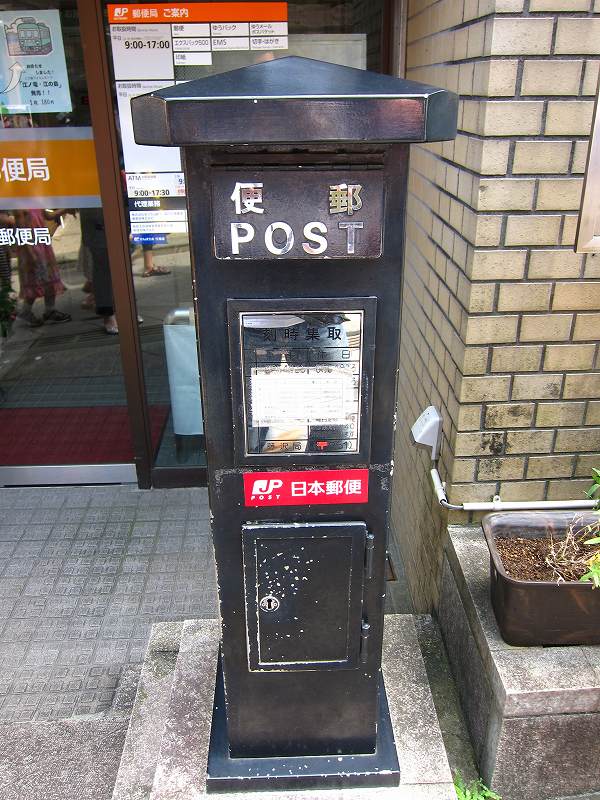 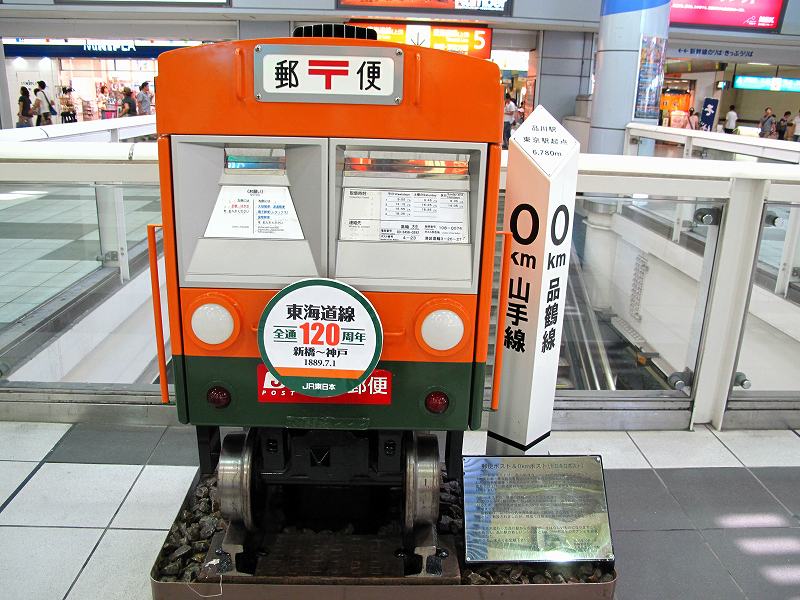
Enoshima;mailbox was painted black Shinagawa;type Kumoyuni-74
|
◆ Mailboxes
Placed in Convenience Stores
Ever since
the operation of mail services was transferred from the Postal Services Agency
to Japan Post, Yu-Pack (parcel) mail handling agency agreements have been
concluded with various convenience store operators (such as Lawson, Circle K,
Sunkus, am/pm, MINISTOP, and others), in order to enhance contact with
customers. In-house mailboxes (donated by convenience store operators) were
placed in each respective convenience store at the same time, with the
exception of Lawson stores, where mailboxes were introduced from January 1,
2003—prior to the renewal of the Yu-Pack service on October 1, 2004. The
in-house mailboxes placed in convenience stores—smaller than ordinary mailboxes
and incapable of accepting larger non-standard-size mail—were later equipped
with slits made larger to accommodate Letter Packs 350 and 500. With the
exception of the Lawson stores, it was decided not to place in-house mailboxes
in convenience stores if ordinary mailboxes were available in the vicinity. In
view of the fact that most of the convenience stores were handling agents of
the takkyubin (express home delivery service) offered by Yamato Transport Co., Ltd.
before they switched to handle Yu-Pack service, Japan Post made collection
from these stores twice a day, in principle, once in the morning and once
in the afternoon, in order to compete with the once-a-day collection made
by Yamato Transport. This was due to the fact that Japan Post guaranteed
its customers two different delivery dates for mail collected in the morning
and that collected before five o’clock in the afternoon, and because the
time required for delivery varied depending on whether mail was carried
by air or not. In addition to the renewed Yu-Pack service, new one-day
and overnight services were introduced to the convenience stores that were
located in Tokyo and that had an alliance with Japan Post. With these new
services, Yu-Pack mail tendered to these partnered convenience stores in
Tokyo before 9:00 p.m. is scheduled to be delivered to recipients in Aichi,
Shizuoka, Tokyo, Chiba, Saitama, Kanagawa, Tochigi, Ibaragi, Gunma, Yamanashi,
Fukushima, Yamagata, and Miyagi prefectures by the morning or afternoon
of the following day. Meanwhile, those tendered before 4:00 a.m. are scheduled
to be delivered to recipients in Tokyo, Chiba, Saitama, Kanagawa, Ibaragi,
Tochigi, Gunma, and Yamanashi prefectures on the same day. There are no
extra charges assessed to these services, such as that for express delivery.
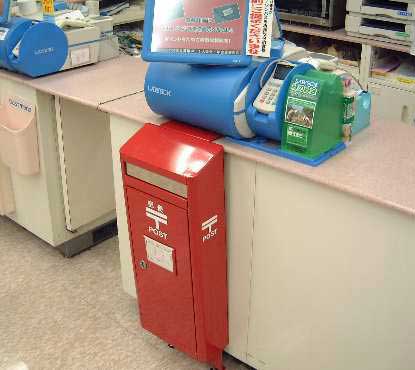
Lawson;Mailboxes Placed in Convenience Stores
|
◆ Private Mailboxes
Upon application, private mailboxes may be installed in areas that impose
no inconvenience on the collection of mail, that expect a reasonable volume
mail, and when no other mailboxes are available in the vicinity. To install
a private mailbox, the purchase and installation costs of the mailbox must
be fully borne by the applicant, who must also pay mail collection fees
to Japan Post Services Co., Ltd. These private mailboxes may be installed,
for instance, due to a request by an office building owner for a mailbox
inside or in front of the building as part of services for building tenants,
by a hotel/hospital operator for the lobby or in front of the entrance
of its facilities for the convenience of guests/patients, or by a business
that dispatches a large volume of mail (i.e., a newspaper publishing company,
broadcasting company, factory, university, department store, trading firm,
etc.). Besides corporations, a private person, a residents’ association,
or an apartment management association may also install a private mailbox,
so long as the required conditions are fulfilled. Use of these private
mailboxes is also limited to the installing party and to those related
thereto when mailboxes are installed inside a factory, private office,
in the residents-only area of an apartment building complex, or in other
areas with restricted access. However, private mailboxes installed in locations
facing public streets, public spaces, or other areas where passage by the
public is admitted may be used by any person who wishes to do so. There
are cases, however, where, for a very limited number of private mailboxes
facing a public area, there may be signs stating that the mailbox can be
used only by authorized parties. Mail collection fees vary depending on
the mailbox location and the frequency of collections requested, and the
fees are set within the range of 80,000 to 240,000 yen a year. Inside the
23 wards of Tokyo, the annual amount of such fees is 240,000 yen for a
mailbox limited to the exclusive use of related parties and 160,000 yen
for a mailbox available to the public.
|
◆ Collection
frequency
Standard collection frequencies for letter-post items, Yu-pack(parcels)
and express mail items in Japan are shown in the table below.
The
collection frequency may be set above or below the standard frequencies,
depending on mail dispatch frequency, local conditions, and the like, and it may
be decreased according to the day or season, such as Sundays, holidays, and the
year-end and New Year period.
|
District
|
Letter-post
|
Yu-pack (parcels)
|
|
Collection-delivery
district
|
1
|
1
|
|
Collection district
|
Branches in the six
major cities
|
3
|
2
|
|
Regional distribution
branches
|
3
|
2
|
|
Other branches
|
2
|
2
|
Six major cities: Tokyo ward, Yokohama city, Nagoya city, Kyoto city, Oosaka
city, Kobe city.
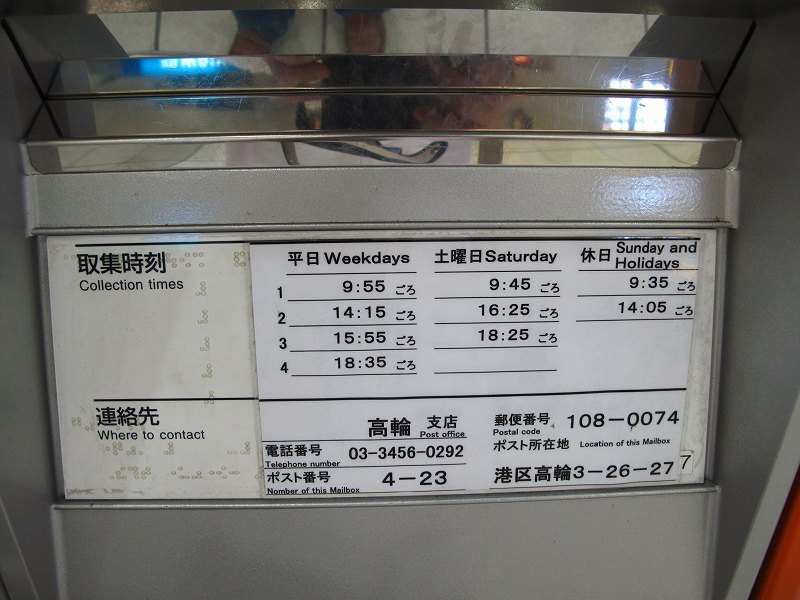
Mailbox in Tokyo ward
|








